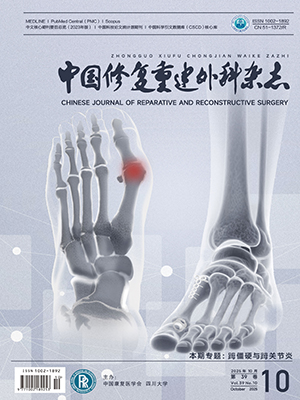| 1. |
Nagata S. A new method of total reconstruction of the auricle for microtia. Plast Reconstr Surg, 1993, 92(2):187-201.
|
| 2. |
Nagata S. Modification of the stages in total reconstruction of the auricle:Part I. Grafting the three dimensional costal cartilage framework for lobule-type microtia. Plast Reconstr Surg, 1994, 93(2):221-330.
|
| 3. |
Nagata S. Modification of the stages in total reconstruction of the auricle:Part II. Grafting the three dimensional costal cartilage framework for concha-type microtia. Plast Reconstr Surg, 1994, 93(2):231-242.
|
| 4. |
Nagata S. Modification of the stages in total reconstruction of the auricle:Part III. Grafting the three-dimensional costal cartilage framework for small concha-type microtia. Plast Reconstr Surg, 1994, 93(2):243-253.
|
| 5. |
Nagata S. Modification of the stages in total reconstruction of the article:Part IV. Ear elevation for the constructed auricle. Plast Reconstr Surg, 1994, 93(2):254-266.
|
| 6. |
Nagata S. Auricular reconstruction:Congenital auricular defects-microtia//Plastic Surgery:Indication and Practice. Phiadelphia:Saunders, 2009:671-699.
|
| 7. |
Chen ZC, Goh RC, Chen PK, et al. A new method for the second-stage auricular projection of the Nagata method:ultra-delicate split-thickness skin graft in continuity with full-thickness skin. Plast Reconstr Surg, 2009, 124(5):1477-1485.
|
| 8. |
Brent B. The correction of mi-rotia with autogenous cartilage grafts:I. The classic deformity. Plast Reconstr Surg, 1980, 66(1):1-12.
|
| 9. |
Brent B. Technical advances in ear reconstruction with autogenous rib cartilage grafts:personal experience with 1200 cases. Plast Reconstr Surg, 1999, 104(2):319-334.
|
| 10. |
Brent B. Microtia repair with rib cartilage grafts:a review of personal experience with 1000 cases. Clin Plast Surg, 2002, 29(2):257-271.
|
| 11. |
Firmin F. Ear reconstruction in cases of typical microtia. Personal experience based on 352 microtic ear corrections. Scand J Plast Reconstr Hand Surg, 1998, 32(1):35-47.
|




